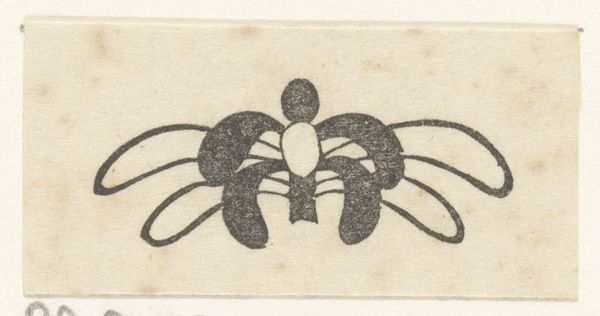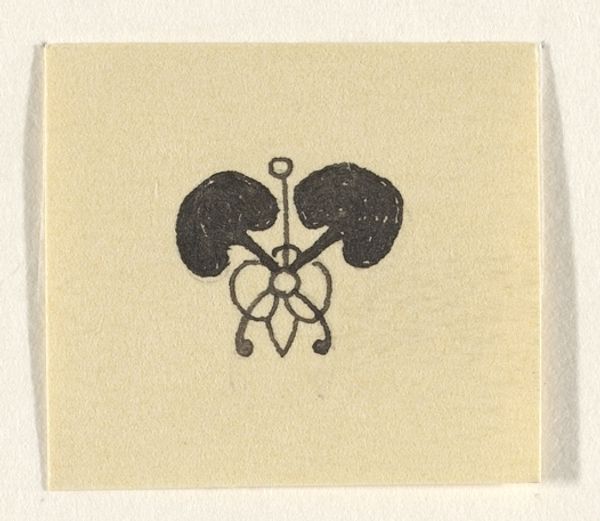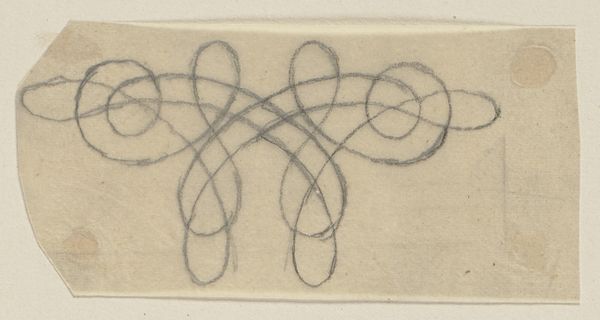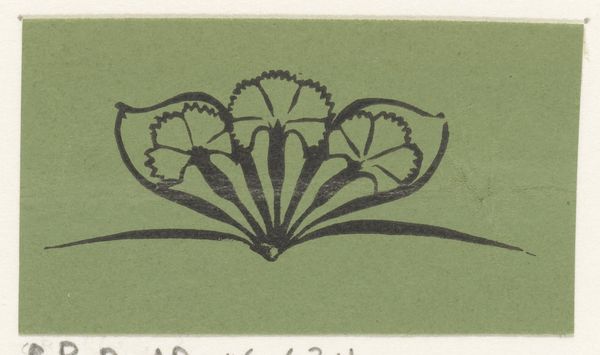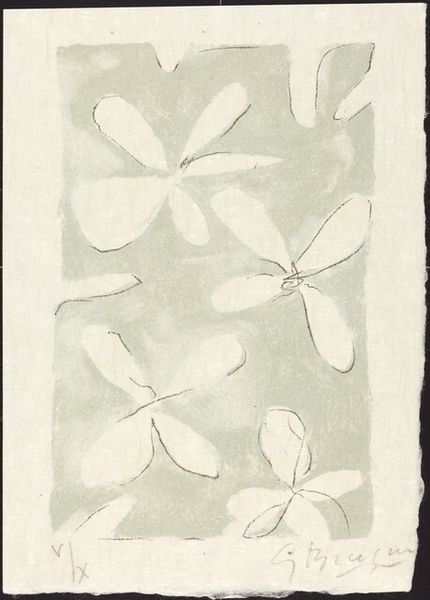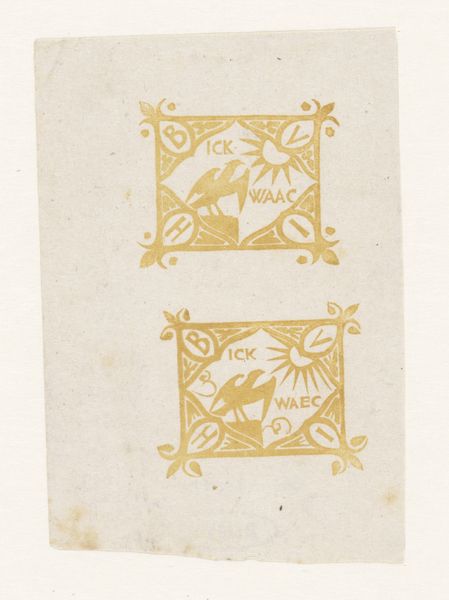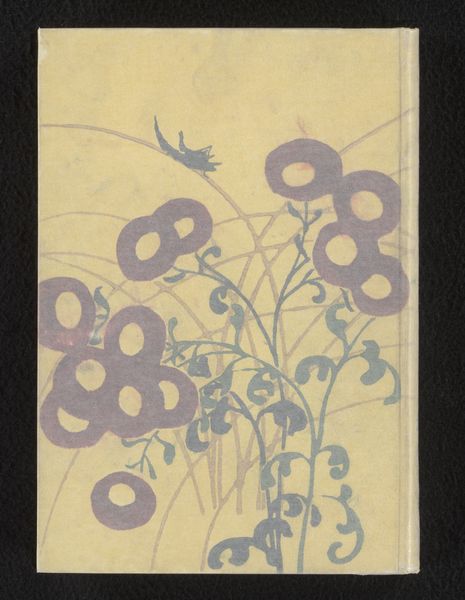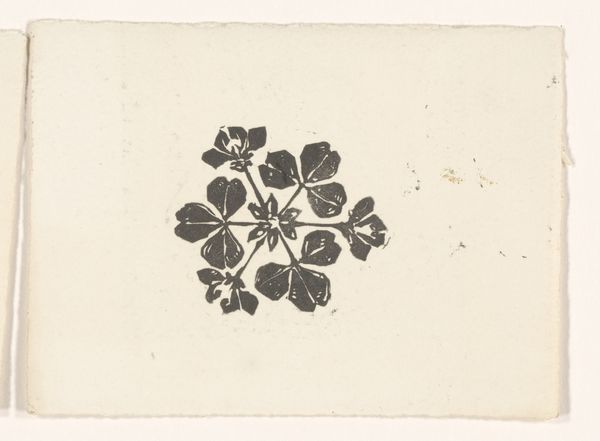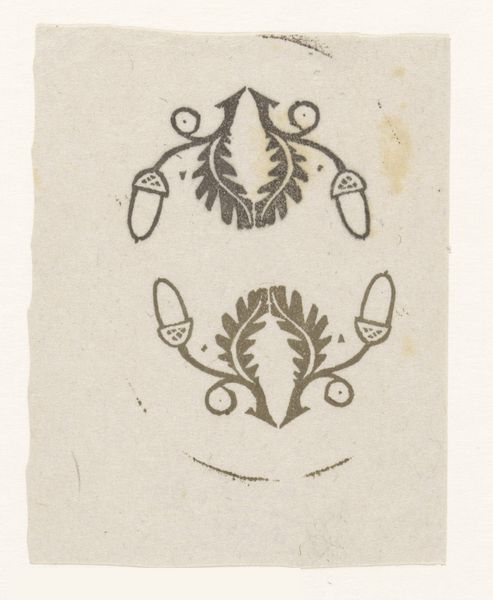
drawing, paper, ink
#
drawing
#
art-nouveau
#
paper
#
form
#
ink
#
geometric
#
ink colored
#
line
#
sketchbook drawing
#
decorative-art
Dimensions: height 13 mm, width 17 mm
Copyright: Rijks Museum: Open Domain
Curator: Julie de Graag created this intriguing work titled "Vignette" sometime between 1888 and 1924. It’s an ink drawing on paper. What strikes you most about it? Editor: Its quiet simplicity, definitely. The stark black ink against the cream-colored paper gives it this sort of subdued yet powerful presence, almost like a minimalist botanical illustration hinting at the organic world. Curator: Right. I find it interesting to consider its role in the decorative arts during that period. We see the influence of Art Nouveau in its stylized, flowing lines. What social and cultural factors do you think might have shaped the creation of a piece like this? Editor: Well, Art Nouveau emerged during a period of massive industrialization. Artists like De Graag, were actively challenging the dehumanizing effects of mass production by handcrafting pieces celebrating individual skill and aesthetic sensibility. Looking at it now, I am also considering women's restricted access to certain artistic institutions. Often, women expressed creativity through media like graphic design. Curator: Exactly. Her medium – ink on paper – and its function likely spoke to its accessibility and reproduction. Think about it as a design for perhaps a larger craft piece. It makes me wonder what the source of her ink was, or even what her studio space looked like? Editor: True. The use of the material speaks volumes here. The limitations inherent in the monochrome palette – black ink on paper – forces a focus on form, on the relationship between positive and negative space, and ultimately, on line. How effectively line alone conveys texture, dimension, mood. What considerations did De Graag put into those materials? Curator: And it points toward labor, doesn’t it? The carefulness, the skill required to achieve such clean lines... We can read the human effort put into this image. Editor: Ultimately, what’s so impactful about "Vignette" is its blend of formalism with social commentary. Curator: So even a small drawing like this, seemingly simple, speaks volumes about larger socio-economic and political landscapes, not to mention how gender and class intersect. Editor: Yes, art’s relationship to identity, right? Curator: I concur entirely. Examining her work and other artist of her day offer ways to explore narratives. Editor: Right, it’s not merely aesthetics, but how production becomes tied to representation.
Comments
No comments
Be the first to comment and join the conversation on the ultimate creative platform.

